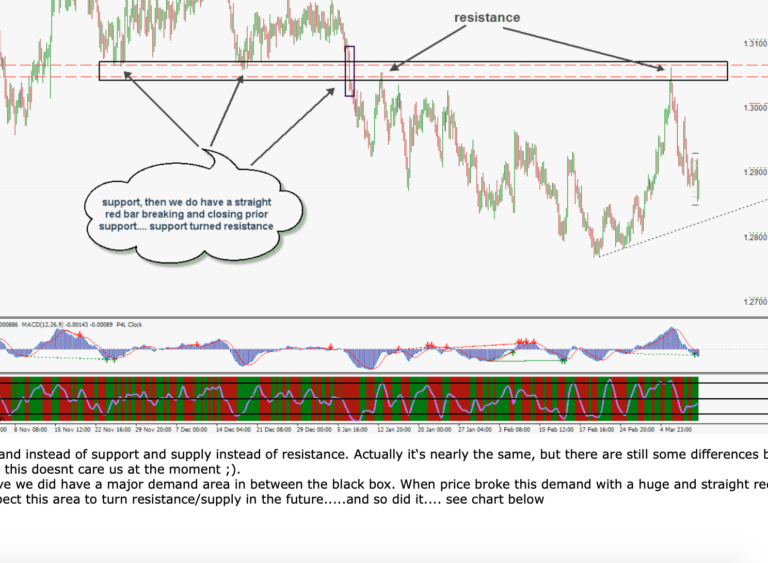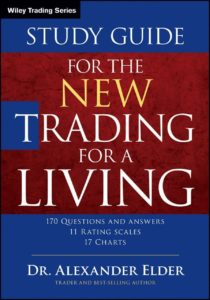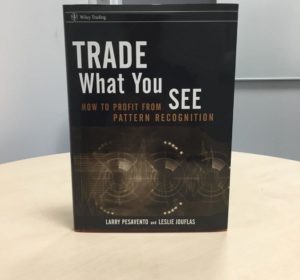Book Objectives and Structure
Given the increasing popularity of trading with moving averages, we thought of writing this book in order to overcome the shortcomings of existing books and give the readers the most comprehensive and objective information about this topic. Specifically, the goals of this book are threefold:
- Provide the in-depth coverage of various types of moving averages, their properties, and technical trading rules based on moving averages.
- Uncover the anatomy of market timing rules with moving averages and offer a new and very insightful reinterpretation of the existing rules.
- Revisit the myths regarding the superior performance of moving average trading rules and provide the reader with the most objective assessment of the profitability of these rules in different financial markets.This book is composed of four parts and a concluding chapter; each part
consists of two or three chapters:
Part I: This part provides the in-depth coverage of various types of moving averages and their properties.
Chapter 1: This chapter presents a brief motivation for using moving aver- ages for trend detection, how moving averages are computed, and their two key properties: the average lag (delay) time and smoothness. The most important thing to understand right from the start is that there is a direct relationship between the average lag time and smoothness of a moving average.
Chapter 2: This chapter introduces the notion of a general weighted moving average and shows that each specific moving average can be uniquely char- acterized by either a price weighting function or a price-change weighting function. It also demonstrates how to quantitatively assess the average lag time and smoothness of a moving average. Finally, the analysis provided in this chapter reveals two important properties of moving averages when prices trend steadily.
Chapter 3: This chapter presents a detailed review of all ordinary types of moving averages, as well as some exotic types of moving averages. These exotic moving averages include moving averages of moving averages and mixed moving averages with less average lag time. For the majority of moving averages, this chapter computes the closed-form solutions for the average lag time and smoothness. This chapter also demonstrates that the average lag time of a moving average can easily be manipulated; therefore, the notion of the average lag time has very little to do with the delay time in the identification of turning points in a price trend.
Part II: This part reviews the technical trading rules based on moving averages and uncovers the anatomy of these rules.
Chapter 4: This chapter reviews the most common trend-following rules that are based on moving averages of prices. It also discusses the principles behind the generation of trading signals in these rules. This chapter also illustrates the limitations of these rules and argues that the moving average trading rules are advantageous only when the trend is strong and long lasting.
Chapter 5: This key chapter presents a methodology for examining how the trading signal in a moving average rule is computed. Then using this methodology, the chapter examines the computation of trading signals in all moving average rules and investigates the commonalities and differences between the rules. The main conclusion that can be drawn from this study is that the computation of the trading indicator in every rule, based on either one or multiple moving averages, can equivalently be interpreted as the
computation of a single weighted moving average of price changes. The analysis presented in this chapter uncovers the anatomy of moving average trading rules, provides very useful insights about popular trend rules, and offers a new reinterpretation of the existing moving average trading rules.
Part III: In this part, we present our methodology for how to scientifically test the claim that one can beat the market by using moving average trading rules.
Chapter 6: This chapter starts with a review of transaction costs in capital markets. Then it demonstrates how to simulate the returns to a moving average trading strategy in the presence of transaction costs. The following two cases are considered when a trading indicator generates a sell signal: case one where the trader switches to cash, and case two where the trader alter- natively sells short a financial asset.
Chapter 7: This chapter explains how to evaluate the performance of a trading strategy and how to carry out a statistical test of the hypothesis that a moving average trading strategy outperforms the corresponding buy-and-hold strategy. In particular, it argues that there is no unique performance measure, reviews the most popular performance measures, and points to the limitations of these measures. The chapter then surveys the parametric methods of testing the outperformance hypothesis and the current “state of the art”non-parametric methods.
Chapter 8: Technical traders typically rely on back-testing which is defined as the process of testing a trading strategy using relevant historical data. Back-testing usually involves “data mining” which denotes the practice offinding a profitable trading strategy by extensive search through a vast number of alternative strategies. This chapter explains that the data-mining procedure tends to find a strategy which performance benefited most from luck. As a result, the performance of the best strategy in a back-test is upward biased. This fact motivates that any back-test must be combined with a data-mining correction procedure that adjusts downward the estimated per- formance. Another straightforward method of the estimation of true perfor- mance of a trading strategy is to employ a validation procedure; this method is called forward-testing.
Part IV: This part contains case studies of profitability of moving average trading rules in different financial markets.
Chapter 9: This chapter utilizes the longest historical sample of data on the S&P Composite stock index and comprehensively evaluates the profitability of various moving average trading rules. Among other things, the chapter investigates the following: which trading rules performed best; whether the choice of moving average influences the performance of trading rules; how accurately the trading rules identify the bullish and bearish stock market trends; whether there is any advantage in trading daily rather than monthly; and how persistent is the outperformance delivered by the moving average trading rules. The results of this study allow us to revisit the myths regarding the superior performance of the moving average trading rules in this well-known stock market and fully understand their advantages and disadvantages.
Chapter 10: This chapter tests the profitability of various moving average trading rules in different financial markets: stocks, bonds, currencies, and commodities. The results of these tests allow us to better understand the properties of the moving average trading strategies and find out which trading rules are profitable in which markets. The chapter concludes with a few practical recommendations for traders testing the profitability of moving average trading rules. The analysis presented in this chapter also suggests a hypothesis about simultaneous existence, in the same financial market, of several trends with different durations.
Conclusion, Chapter 11: This concluding chapter presents a brief summary of the key contributions of this book to the field of technical analysis offinancial markets. In addition, the chapter derives an alternative representa- tion of the main result on the anatomy of moving average trading rules. It is demonstrated that all these rules predict the future price trend using a simple linear forecasting model that is identical to models used in modern empiricalfinance. Therefore, this alternative representation allows us to reconcile modern empirical finance with technical analysis of financial markets that uses moving averages. Finally, this chapter discusses whether the advantages of the moving average rules, observed using past (historical) data, are likely to persist in the future.
This book is not for a layman who believes that moving averages offer a simple, quick, and easy way to riches. This book is primarily intended for a serious and mathematically minded reader who wants to get an in-depth knowledge of the subject. Even though, for the sake of completeness of exposition, we briefly cover all relevant theoretical topics, we do not explain the basic financial terminology, notions, and jargons. Therefore, this book is best suited for the reader with an MS degree in economics or business administration who is familiar with basic concepts in investments and statistics. Examples of such readers are academics, students at economic departments, and practitioners (portfolio managers, quants, traders, etc.). This book is, in principle, also suited for self-study by strongly motivated readers without prior exposure to finance theory, but in this case the book should be supplemented by an introductory textbook on investments at least (an example of such book is Bodie, Kane, and Marcus 2007).
Parts I and II are relatively easy to comprehend. These parts require only the knowledge of high school mathematics, basically a familiarity with arithmetic and geometric series and their sums. The material presented in Parts III and IV of this book makes it necessary to use extensively financial mathematics and statistics. Without the required prerequisites, the reader can try to skip Part III of the book and jump directly to Part IV. However, in order to understand the results reported in Part IV of this book, the reader is required to have a superficial knowledge of back-tests and forward-tests, and to understand our notion of “outperformance” which is the difference between the performances of the moving average trading strategy and the corresponding buy-and-hold strategy.















